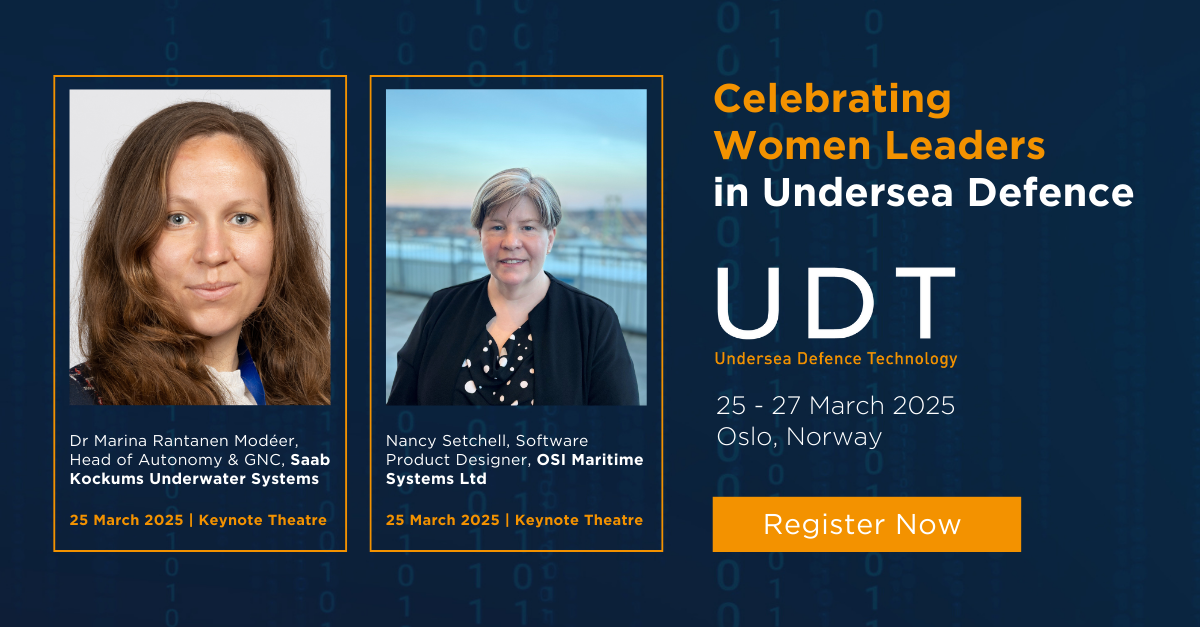UDT Women in Defence

Female representation in the maritime domain has traditionally been limited. Olivia Savage speaks with senior female leaders within the field to explore this.
Historically, the number of women working in the maritime sector has been limited, with the navy experiencing an even greater disparity.
“Women are underestimated and underrepresented in the [maritime] domain”, Nancy Setchell, Software Product Designer at OSI Maritime Systems told UDT on 7 March, a day before International Women's Day.
Setchell, who has served in the Royal Canadian Navy for 28 years, explains this is particularly the case in the navy because it’s a “very hash environment and a very unwelcoming environment”.
Being at sea for months at a time also makes it difficult for women to start families, Setchell acknowledged. Women in higher positions are therefore less common, especially considering it takes many years for an individual to become a senior leader in the navy.
Nevertheless, due to efforts back in the 1980s and 1990s women in senior leadership roles in the Royal Canadian Navy are growing, she added.
In comparison, the maritime industry has greater female representation, Setchell said, adding that “it’s fantastic”.
Dr Marina Rantanen Modéer, Head of Autonomy & GNC at Saab Kockums Underwater Systems agreed with Setchell to an extent. Although, she added that the number of women in her office remains limited.
Saab’s undersea department is particularly underrepresented, especially compared with the aeronautics division where there are “plenty more female engineers”, Modéer said.
This could be because women within Saab perceive the company’s undersea business to be more combative and weaponised, given its focus on developing specific weapons, such as torpedoes, Modéer argued. The aeronautics division, meanwhile, focuses on building platforms, such as fighter jets, rather than specific weapons. “But I think they are fooling themselves”.
“Women have stronger feelings against violence”, although this is just a theory, she added.
The company also has “very, very few female applicants for jobs”, Modéer said, adding that this is across the whole engineering sector.
“We need more women in engineering, because then we have more people to choose from in this very tech dense time period. If half the population chooses to study something else, then we have far fewer people to choose from when we want to build the best technology”, Modéer explained.
Regarding the future of women in the maritime domain and military generally, Modéer expressed optimism, stating, “we're getting there”. As more women enter this field, different role models will be created, which should entice more young women to pursue a career in this area, she continued.
For Setchell, greater female representation in the military and maritime domain will only be realised when senior leaders and decision-makers acknowledge the benefits of having diverse perspectives. She argued that incorporating different voices and viewpoints “is going to be the best way to solve problems”. This is especially the case in undersea defence, where diversity of thought and experience is required, given its complexity. This is only achievable through a diverse team, she concluded.
Modeer and Setchell are scheduled to speak at the UDT conference, covering differing aspects of Artificial Intelligence (AI). Modeer will discuss adaptive synthetic cognition for sentient undersea systems, while Setchell will address uncrewed surface vehicles collision avoidance decisions.
To hear from women leaders in undersea defence and our stellar lineup of other speakers, including leading experts from industry, academia, government, and the military, join us in Oslo, Norway from 25-27 March 2025.
Author Details
Olivia Savage
Editor-in-chief
Olivia Savage is the Editor in Chief of Clarion Defence & Security, organisers of DSEI and other defence events. Previously, she was a Senior Defence Journalist at Janes, specialising in electronic warfare, uncrewed systems, and space.
